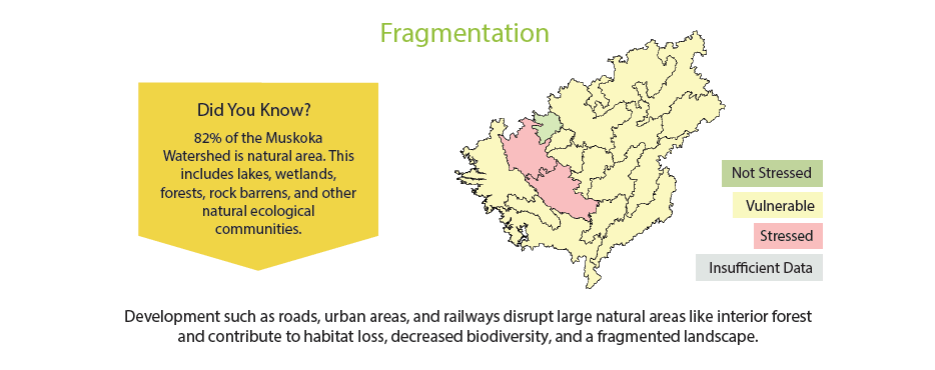Fragmentation: A Big Concern For Muskoka

The 2018 Muskoka Watershed Report Card released by the Muskoka Watershed Council features 8 different indicators of watershed health. Fragmentation is one of these indicators, categorized as a threat indicator rather than a health indicator.
82% of the Muskoka Watershed is made up of natural areas which include lakes, wetlands, forests, rock barrens, and other natural ecological communities. Fragmentation is defined as the destruction of these natural areas for development purposes such as building roads, urbans areas, railways, etc. Fragmentation has multiple negative impacts such as habitat loss, decreased biodiversity, and a fragmented landscape which can greatly impact our economy. While development can allow for more people to come to Muskoka, too much development will result in a negative impact on Muskoka’s economy due to degradation of the landscape and a drop in tourism.
Large, undisturbed, natural areas are important for healthy watersheds and should be preserved in order to supply goods and services required satisfy the environmental, social, cultural and economic needs of our communities. The best way to limit the effects of fragmentation in Muskoka is to be a land steward and help support and protect shorelines and green infrastructure initiatives.
Check out how your subwatershed ranks for fragmentation and what you can do to help by visiting the 2018 Muskoka Watershed Report Card website at https://www.muskokawatershed.org/.

